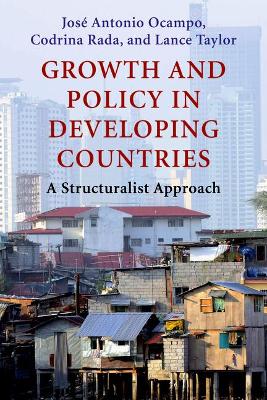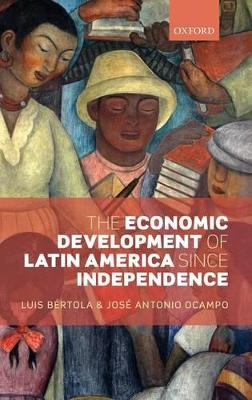Initiative for Policy Dialogue
2 total works
Growth and Policy in Developing Countries
by Jose Antonio Ocampo, Codrina Rada, and Lance Taylor
Published 22 October 2009
Economic structuralists use a broad, systemwide approach to understanding development, and this textbook assumes a structuralist perspective in its investigation of why a host of developing countries have failed to grow at 2 percent or more since 1960. Sensitive to the wide range of factors that affect an economy's strength and stability, the authors identify the problems that have long frustrated growth in many parts of the developing world while suggesting new strategies and policies to help improve standards of living.
After a survey of structuralist methods and post-World War II trends of global economic growth, the authors discuss the role that patterns in productivity, production structures, and capital accumulation play in the growth dynamics of developing countries. Next, it outlines the evolution of trade patterns and the effect of the terms of trade on economic performance, especially for countries that depend on commodity exports.
The authors acknowledge the structural limits of macroeconomic policy, highlighting the negative effects of financial volatility and certain financial structures while recommending policies to better manage external shocks. These policies are then further developed through a discussion of growth and structural improvements, and are evaluated according to which policy options-macro, industrial, or commercial& mdash;best fit within different kinds of developing economies.
After a survey of structuralist methods and post-World War II trends of global economic growth, the authors discuss the role that patterns in productivity, production structures, and capital accumulation play in the growth dynamics of developing countries. Next, it outlines the evolution of trade patterns and the effect of the terms of trade on economic performance, especially for countries that depend on commodity exports.
The authors acknowledge the structural limits of macroeconomic policy, highlighting the negative effects of financial volatility and certain financial structures while recommending policies to better manage external shocks. These policies are then further developed through a discussion of growth and structural improvements, and are evaluated according to which policy options-macro, industrial, or commercial& mdash;best fit within different kinds of developing economies.
The Economic Development of Latin America since Independence
by Luis Bertola and Jose Antonio Ocampo
Published 25 October 2012
Latin America is attracting increasing interest due to the strong economic performance of the last decade and to the political changes that are taking place. This book gives a unique, comprehensive, and up to date view of Latin America economic development over the two centuries since Independence. It considers Latin American economies within the wider context of the international economy, and covers economic growth, international trade, capital flows, and trends in
inequality and human development.
With chapters that cover different eras, it traces the major developments of Latin American countries and offers a novel and coherent interpretation of the economic history of the region. It combines a wealth of original research, new perspectives, and empirical information to provide a synthesis of the growing literature that both complements and extends previous studies.
inequality and human development.
With chapters that cover different eras, it traces the major developments of Latin American countries and offers a novel and coherent interpretation of the economic history of the region. It combines a wealth of original research, new perspectives, and empirical information to provide a synthesis of the growing literature that both complements and extends previous studies.

